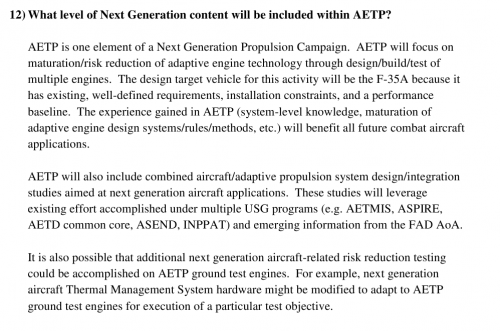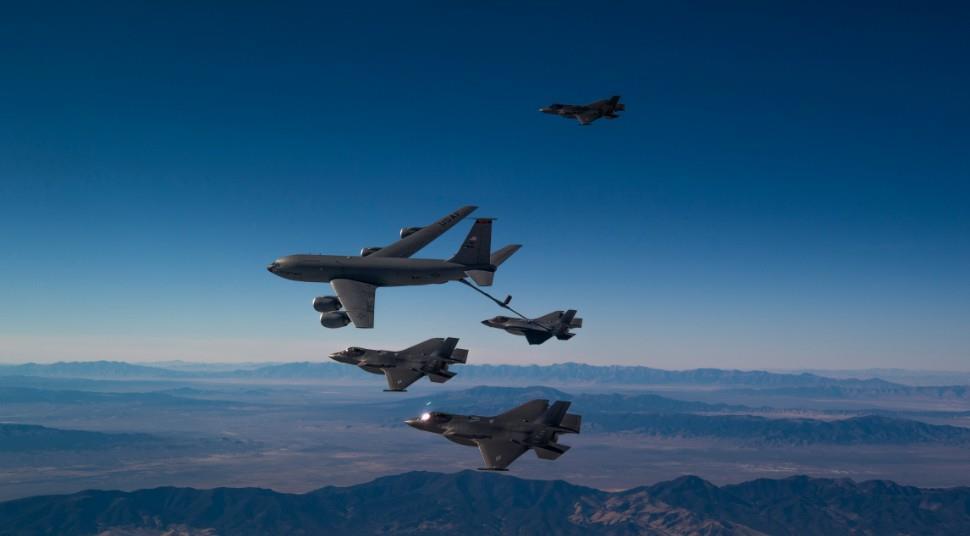Farnborough, UK—Last week's matching $1 billion contracts to Pratt & Whitney and General Electric for the Advanced Engine Technology Program could produce a powerplant delivering 20 percent better fuel efficiency—hence much better range—for the F-35, Pratt's Bennett Croswell, president of Pratt military engines, told Air Force Magazine Monday. The first block of the program could be designed by 2019 and in production in 2024, he said, delivering seven-10 percent better efficiency. Block 2 would follow five years later, with a likely 15-20 percent improvement over today's F135 engine. However, Croswell said the F-35 would probably need to be modified to accept a new engine. The airframe is "basically wrapped around it," and the fit is snug. While he said the intakes wouldn't have to be altered, "the back end" would need to grow, "and if you do that, the exhaust nozzle" would probably have to be re-engineered as well. Croswell declined to speculate about whether the AETP program is meant to give GE—and competitive engine buys—another chance. The alternative F136 engine, developed by GE, was killed by Defense Secretary Robert Gates, who insisted it was unnecessary and wasteful.


